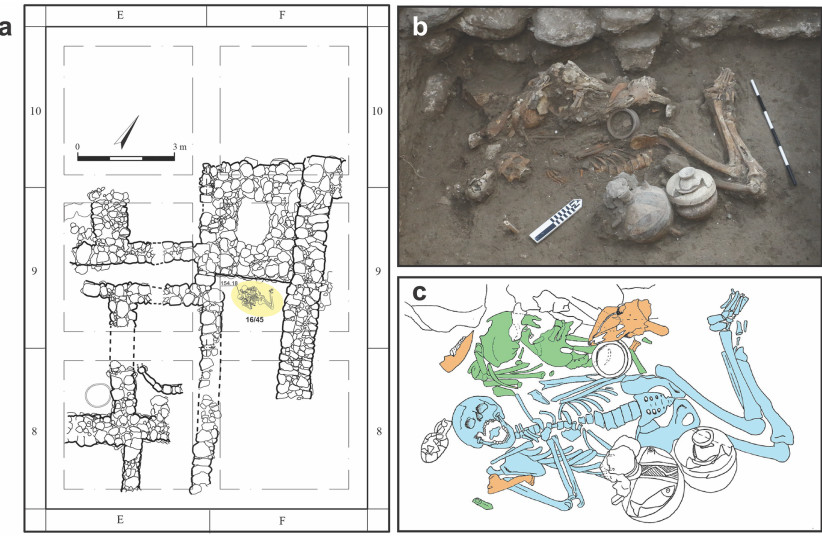One of two high-status brothers buried in a Bronze Age tomb in Megiddo more than 3,500 years ago was the beneficiary of one of the earliest known brain surgeries carried out in the Middle East.
In the surgical procedure, called trephination, a circular piece of bone is drilled and excised, most commonly from the human skull. It is one of the oldest known surgeries, dating back thousands of years, with some skeletons in France discovered that had it done 6,500 years ago.
The discovery in Megiddo was reported in a study just published on 19 pages in the open-access journal PLOS ONE under the title “Cranial trephination and infectious disease in the Eastern Mediterranean: The evidence from two elite brothers from Late Bronze Megiddo, Israel.”
Rachel Kalisher, a bioarchaeologist pursuing a doctorate in archaeology and an MS in ecology and evolutionary biology at Brown University in Rhode Island in the US, led the study.
“Among the study’s multiple findings, we highlight the special type of cranial trephination, the earliest of its kind in the region,” the authors stated. “This uncommon procedure was done on an elite individual with both developmental anomalies and infectious disease, which leads us to suggest that this operation may have been an intervention to deteriorating health.”

It is also the only time that archaeologists also discovered pieces of the skull that were taken out, which helps the experts understand how the surgery was completed.
Meggido, known for its historical, geographical and theological importance, is located about 30 km. southeast of Haifa. During this period, Megiddo reached its greatest size, population and wealth, with investments in monumental architecture including palaces, temples, fortifications and gates.
As evidence of its status, Megiddo has documented in the royal Late Bronze Age Amarna Letters, an archive of diplomatic correspondence between Egypt and its vassals from the 14th century BCE.
DNA testing suggested that the buried men were brothers. Both skeletons show evidence of disease, providing an opportunity to study how chronic, debilitating illness was treated during this time period. The advanced state of the lesions pointed to the fact that, despite the severity of the condition, the brothers survived for many years, maybe due to the privilege of wealth and status.
The trephination was apparently meant to treat the patient’s ailment, but the lack of bone healing suggests the individual died during or shortly after surgery.
The brothers’ tomb was decorated with high-quality food and fine ceramics similar to those in other nearby high-status tombs. This suggests these individuals were not “othered” nor excluded from burial traditions due to their poor health. This serves as an important case study for continuing investigation into the intersections of status, illness and treatment in societies through time, the researchers said.
Other participants in the research were the W.F. Albright Institute for Archaeological Research in Jerusalem; the Recanati Institute for Maritime Studies and the School of Archaeology and Maritime Cultures at the University of Haifa; and the Institute of Ancient History and Ancient Near Eastern Studies, University of Innsbruck in Austria.
